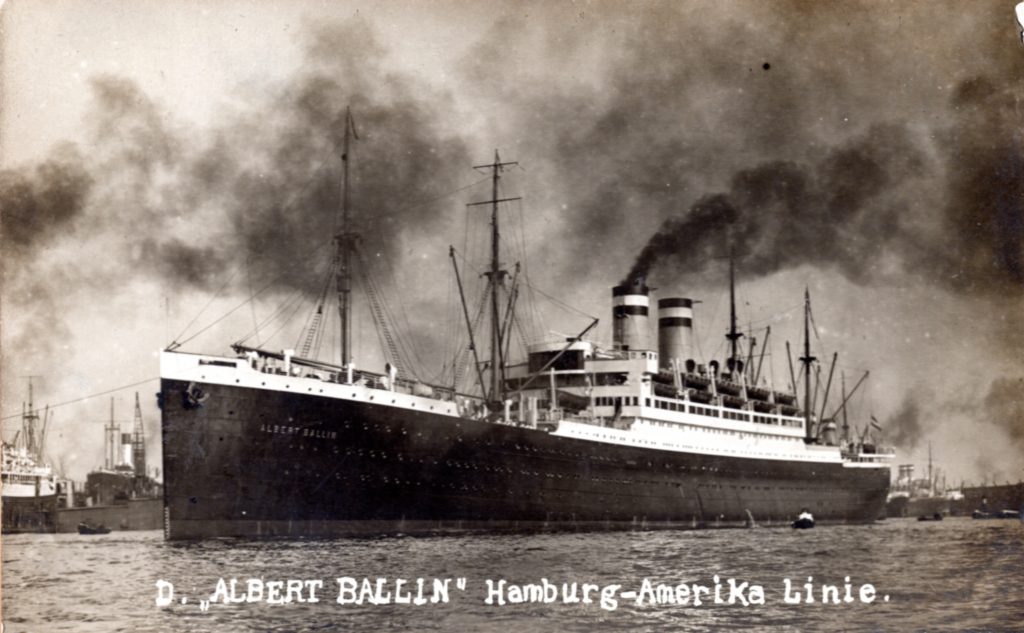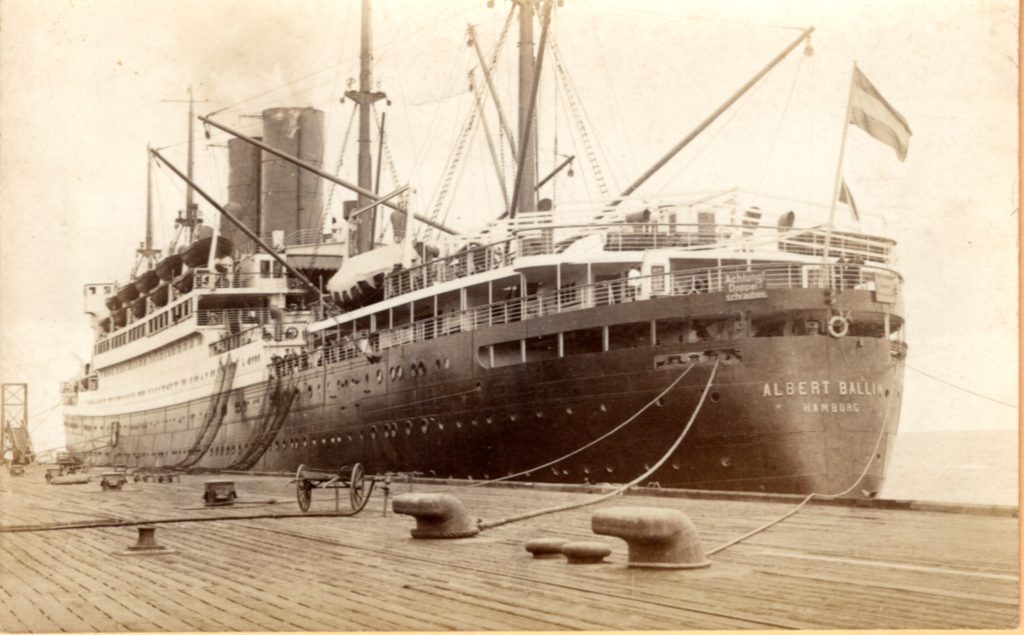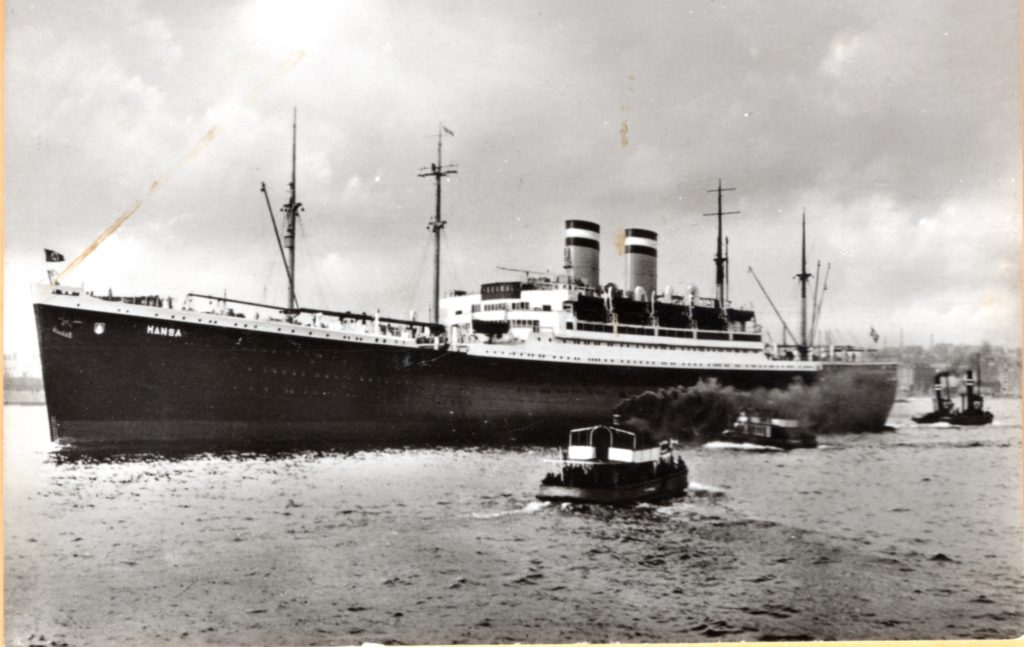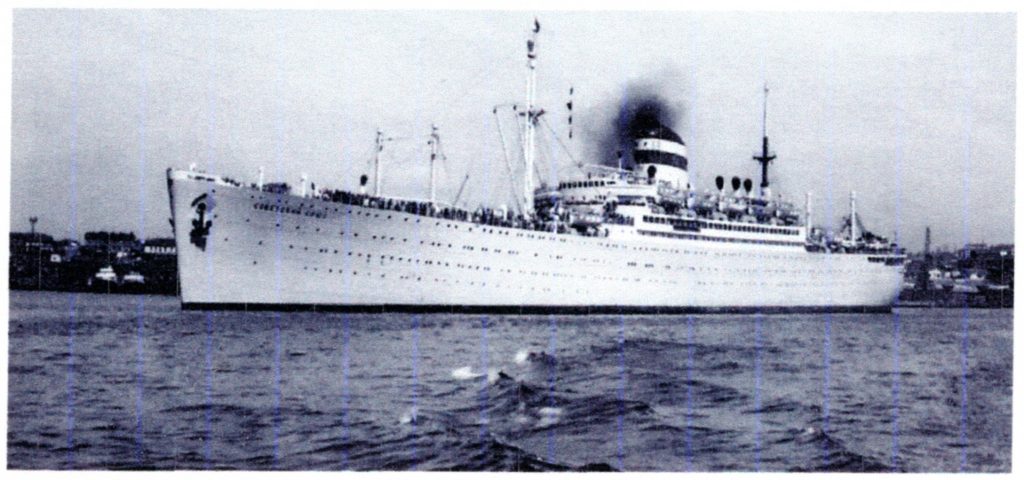
The story of the Hamburg-American Ship Line’s passenger vessel SS Albert Ballin began on December 16, 1922, when she was launched in Hamburg, Germany by the Blohm & Voss Ship Building Company. She was 602 feet long, 73 feet wide, and was 20,815 gross registered tons (GRT). The Albert Ballin was built to accommodate 1,022 passengers: 183 in first class, 216 in second class, and 613 in third class).
The ship was named after a former general director of the Hamburg-American Line. Albert Ballin is credited as being the first person to commission a purpose-built cruise ship, the Prinzessin Victoria Luise, in 1900, a year frequently recognized as the birth of what became the cruise ship industry that flourishes worldwide today.
Two days before the end of World War One, Albert Ballin committed suicide fearing, correctly, that his fleet of ships would be awarded to the victors.

The SS Albert Ballin was the first of four sister ships built in Germany after World War I; followed by Deutschland (1924), Hamburg (1926), and New York (1927). After some modifications to its engines that gave her increased speed, and being lengthened in 1934, the ship was eventually taken over by the Nazi regime in 1939 and renamed the SS Hansa. It can possibly go without saying that since Albert Ballin was a Jew that the ship’s name was changed.

It is here that through postcards, we can see the history of SS Hansa which continued to carry passengers to and from the United States until war was declared on Germany in 1941.
As the second World War progressed, SS Hansa was used mostly as a barracks ship for U-boat crews, but she figured prominently in one notable event that occurred in early 1945. Hansa participated in Operation Hannibal, an evacuation by sea from East Prussia of over one million surrounded German civilians and troops, who were attempting escape from the Soviets who were marching across Germany with other allied troops toward victory.
On March 6, 1945, during one of these evacuation cruises, SS Hansa struck a mine off the coast of Warnemunde and sank in the shallow waters of the Baltic Sea.
In 1949 the wreck of the Hansa was salvaged by the Soviet Union and was dramatically rebuilt between 1950 and 1955. She returned to service with a new name Sovetskiy Soyus (Soviet Union), with increased tonnage (23,001 GRT) which distinguished her as the largest passenger ship in the Soviet Union. From 1955 to 1980 she sailed between Vladivostok and Kamchatka carrying over 660,000 passengers over the years.

In 1980, she was again renamed Tobolsk but was soon laid up and eventually scrapped in Hong Kong in 1982.
There were many ships whose names changed and later served for other countries during World War II but with the postcard history available on this vessel the story seemed perfect to be told.
***
Aside: The SS Albert Ballin is a prominent example of a ship’s name changing. The practice is not an everyday event, but it is done due to age, design, function, cost, and in some cases to satisfy the sensibilities of those who will work on a vessel or be honored by it. It is also done to preserve a ship’s history and retire its log. When a name changes, a ship’s history ends, and the result is equated to the creation of a new vessel.
The change of ship names is much less common in the commercial world, where such events are driven by money made and money spent. There is one organization that changes ship names more frequently than others and it does so without apology – it’s the United States Navy!
Two newsworthy examples among hundreds are: the aircraft carrier USS BON HOMME RICHARD (CV 10) was renamed YORKTOWN in September 1942, prior to launch, to perpetuate the name of YORKTOWN (CV 5) lost in June 1942 during the Battle of Midway; and aircraft carrier USS UNITED STATES (CVN 75) was renamed HARRY S. TRUMAN while under construction in 1995 as part of a reciprocal agreement between the Clinton administration and the Republican-led Congress that named the new CVN 76 after RONALD REAGAN.
Citing the Defense and Aerospace Report website, “Yes, it can get very complicated!”